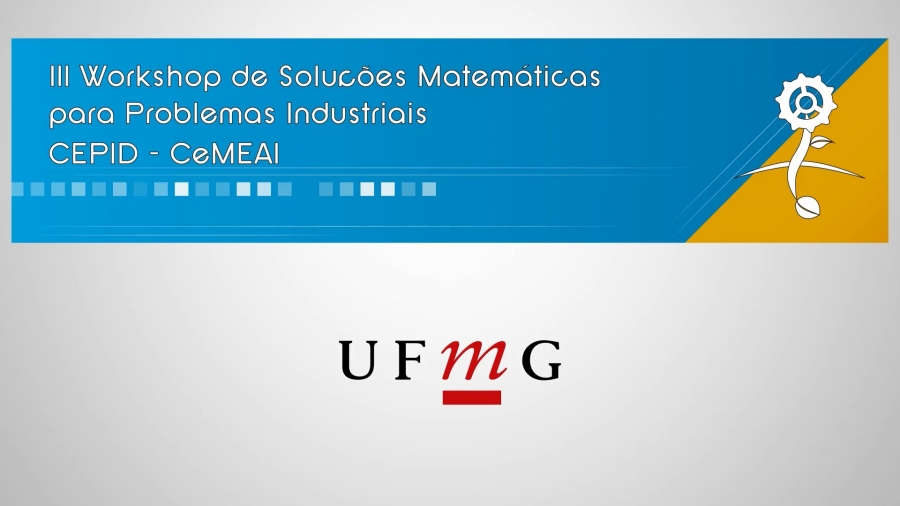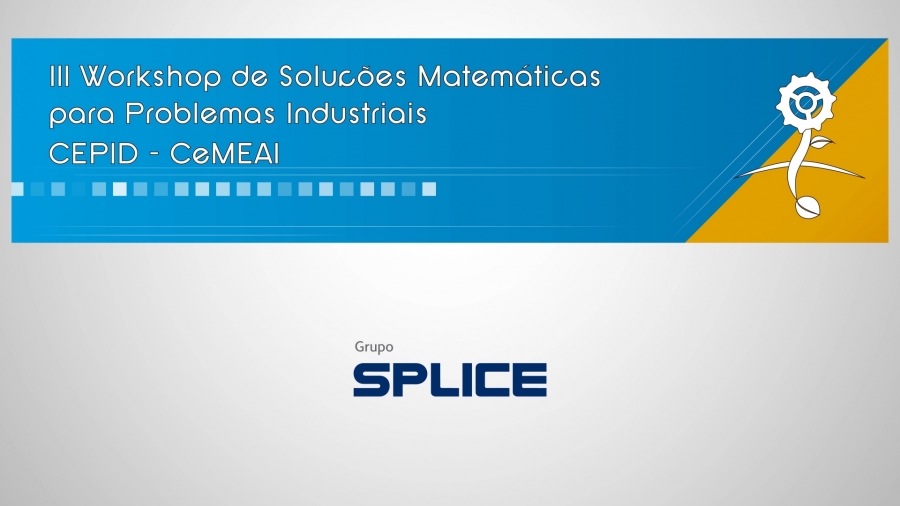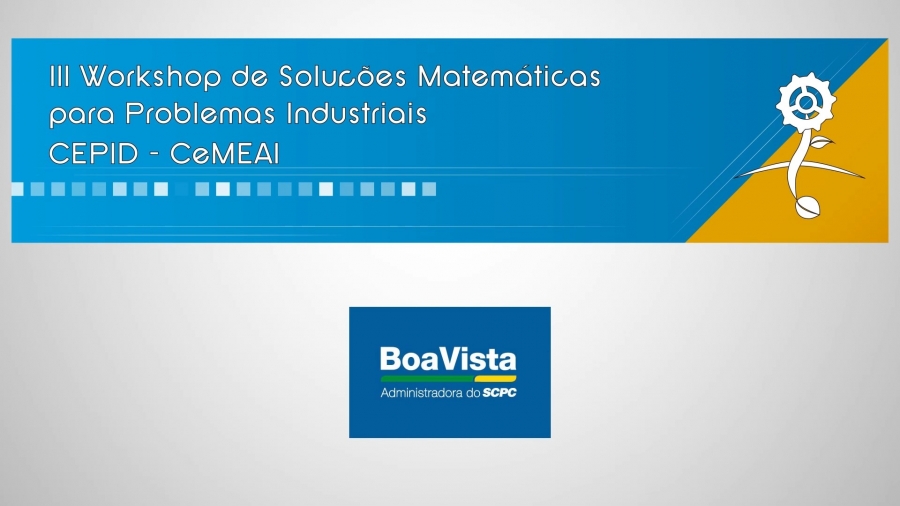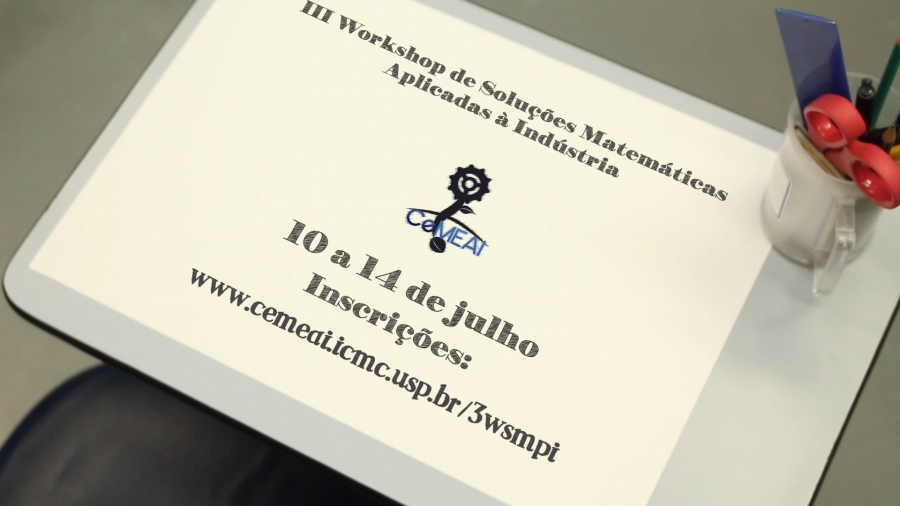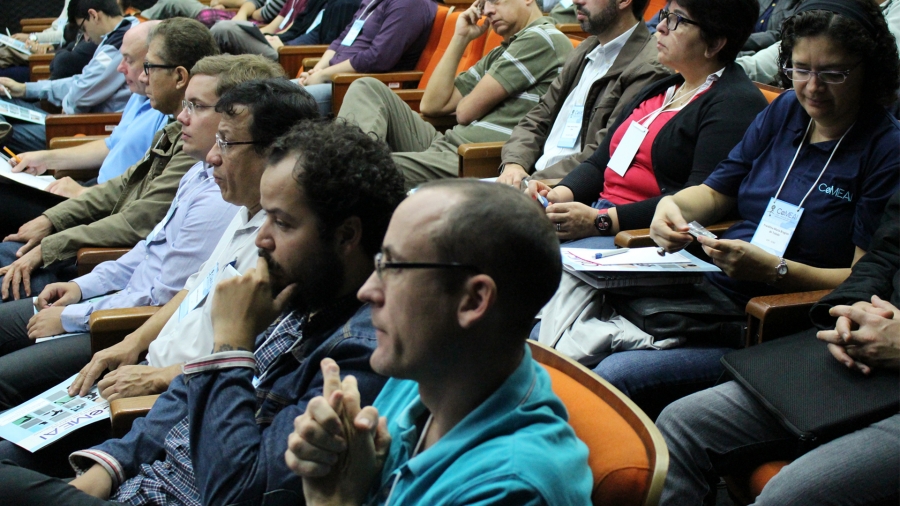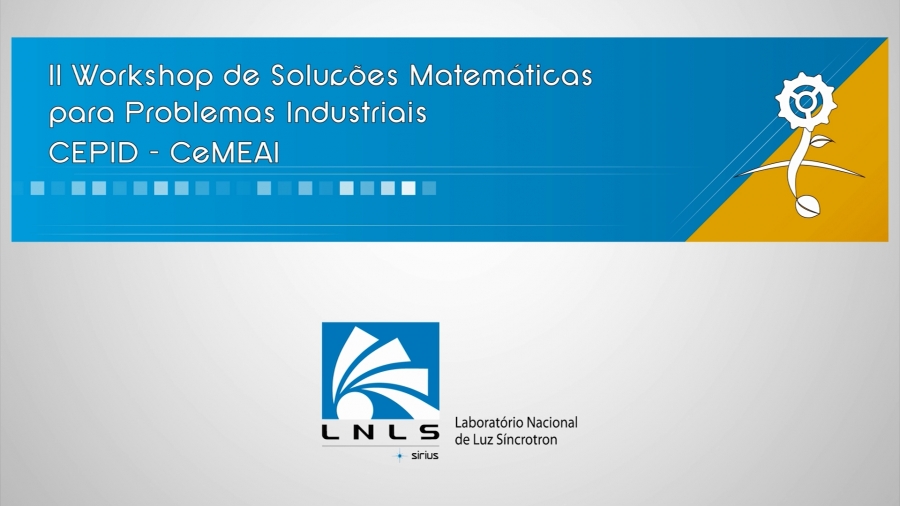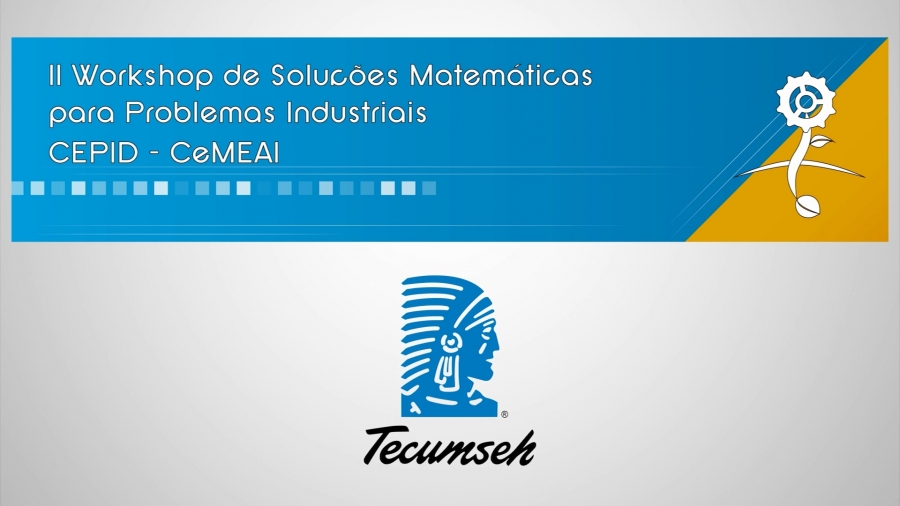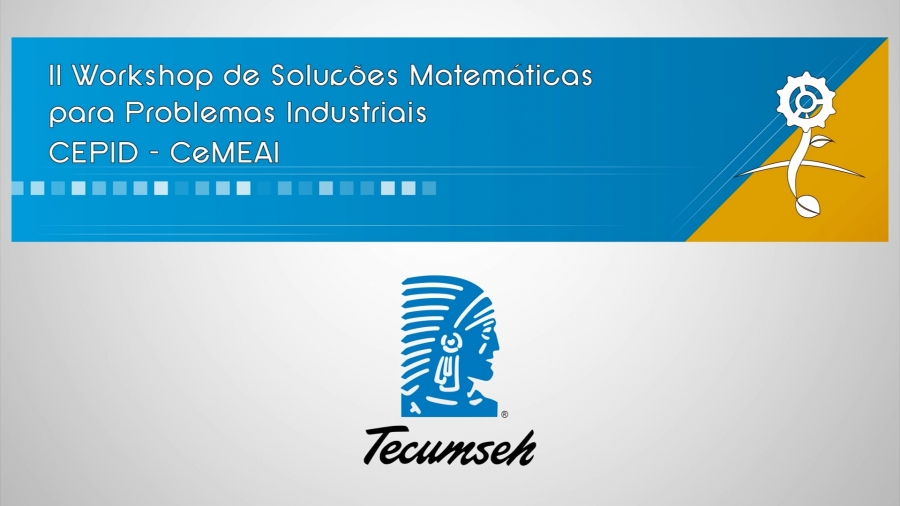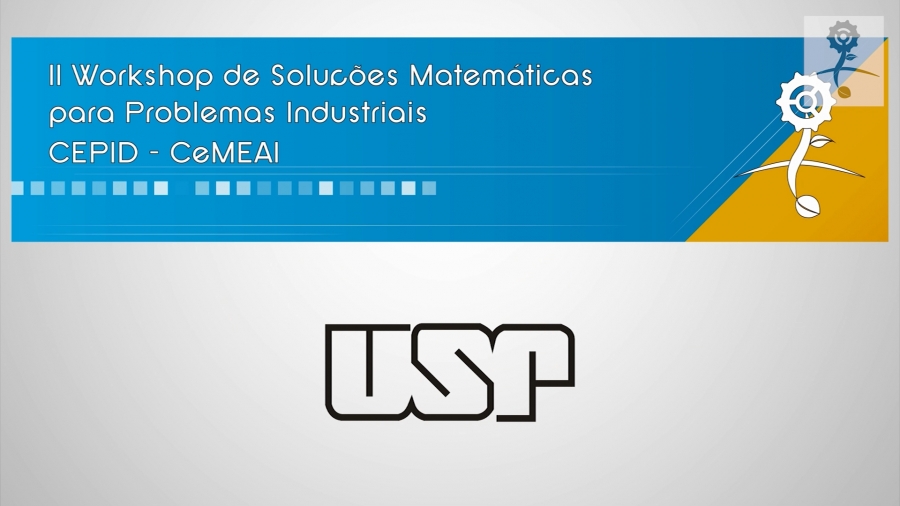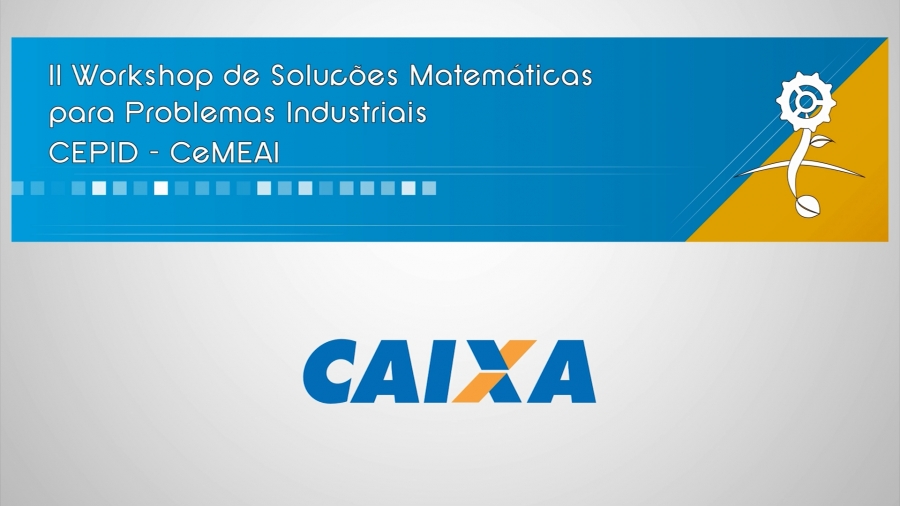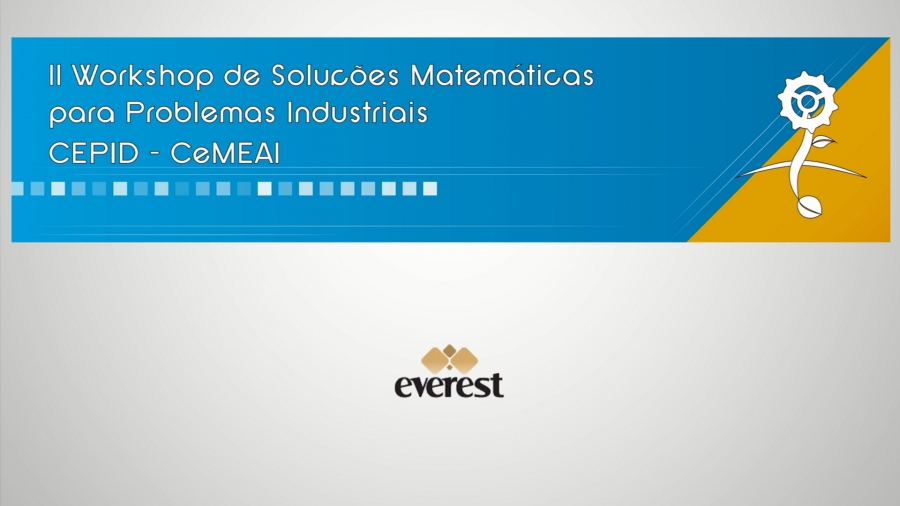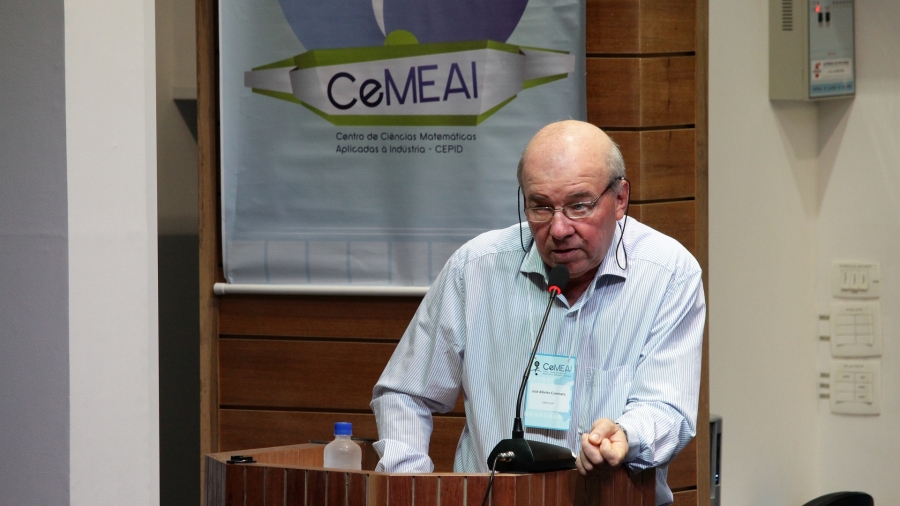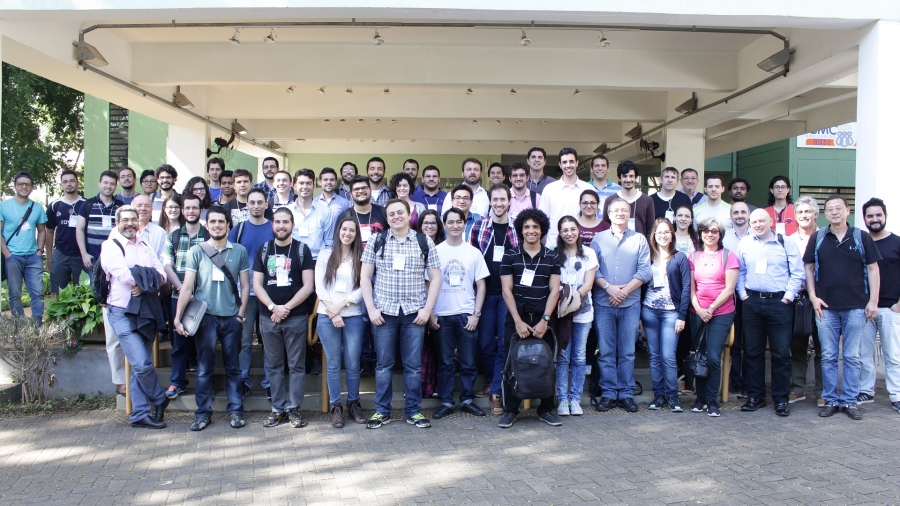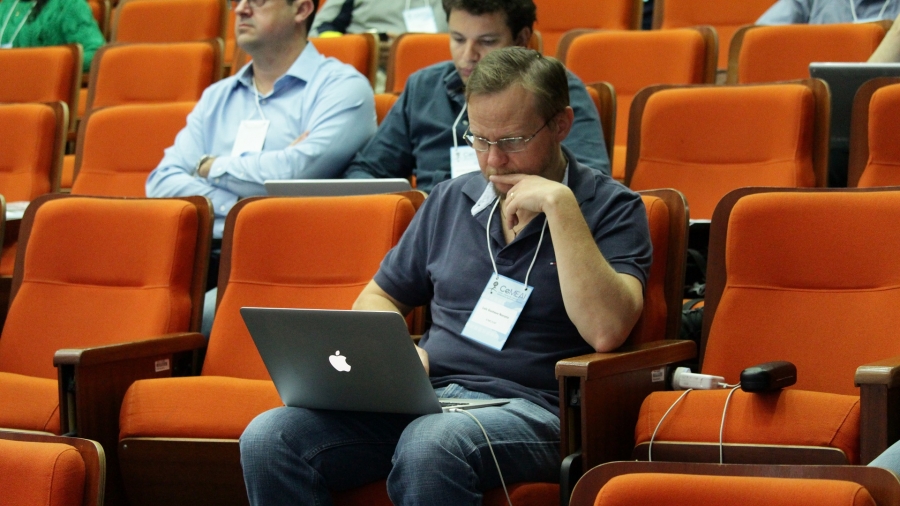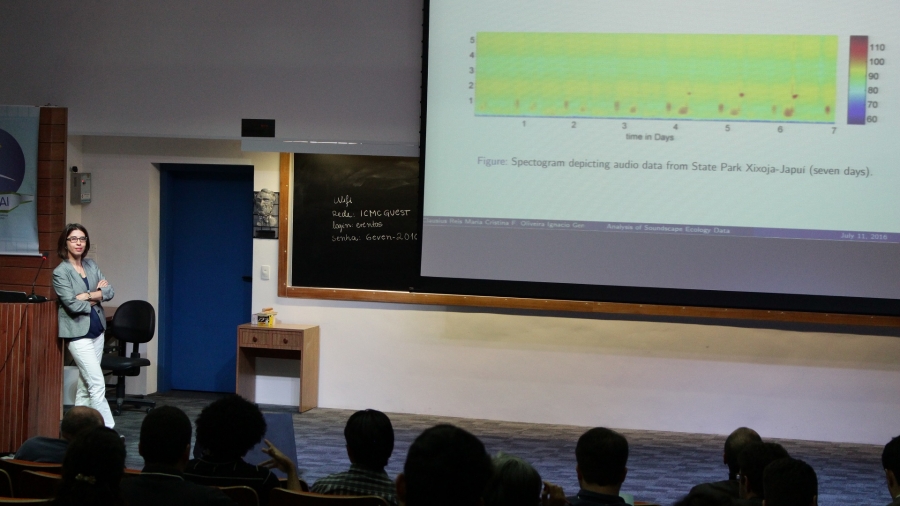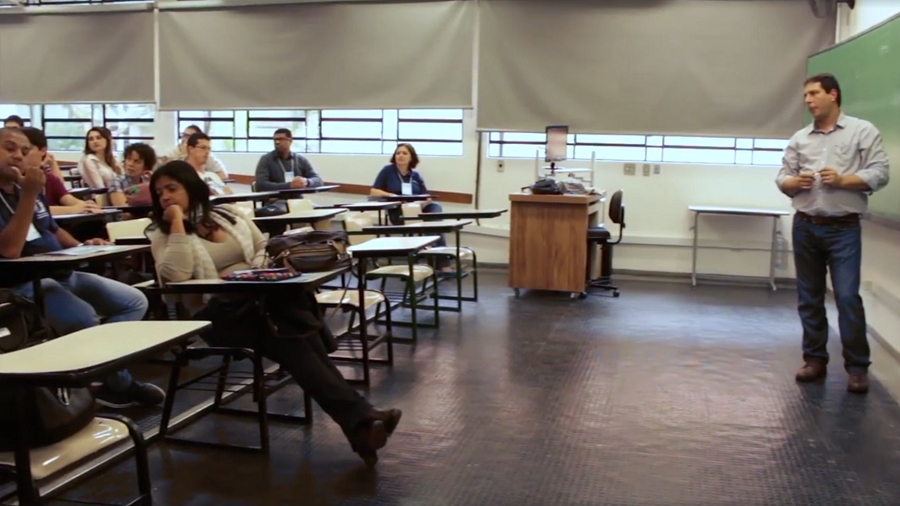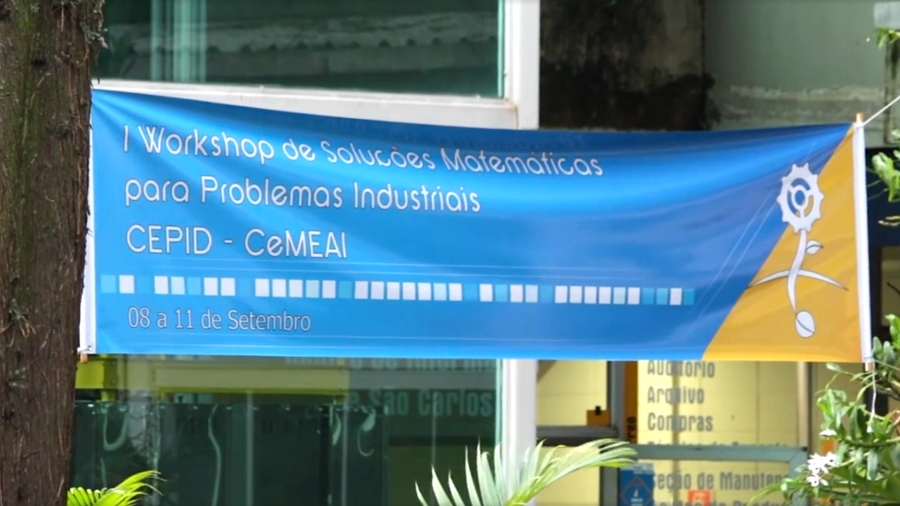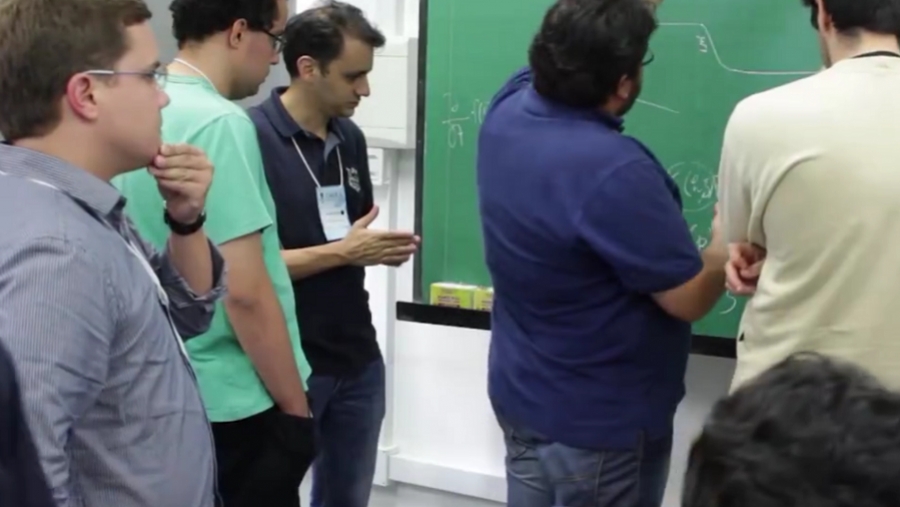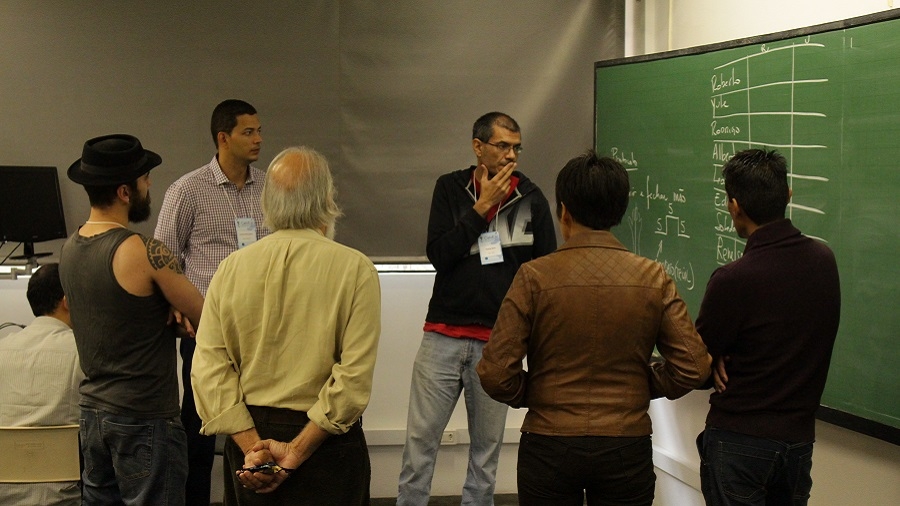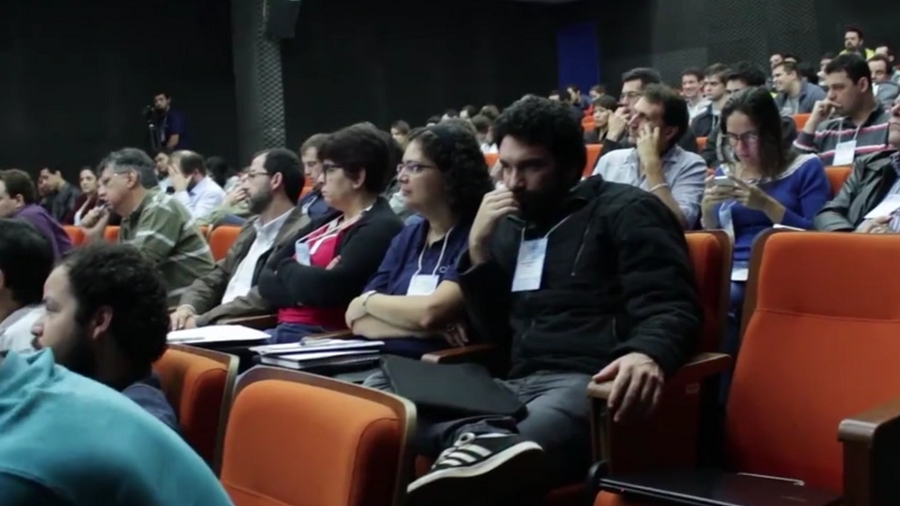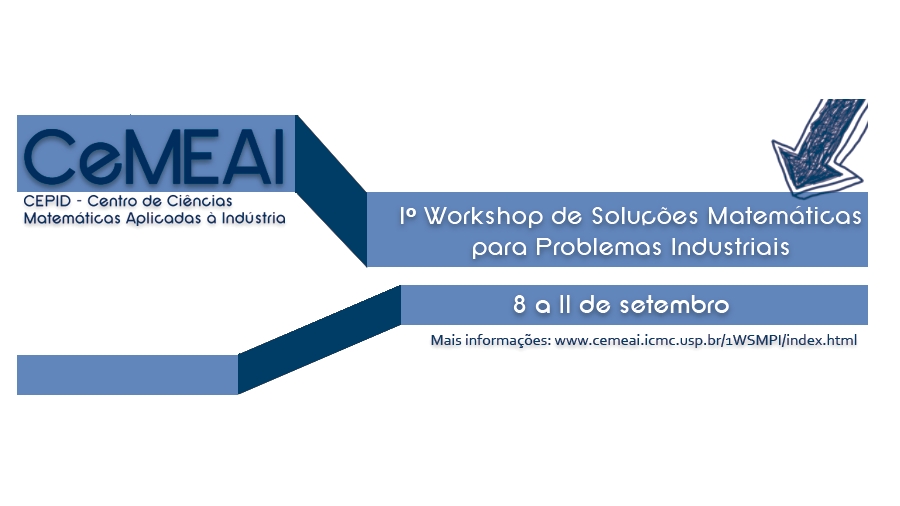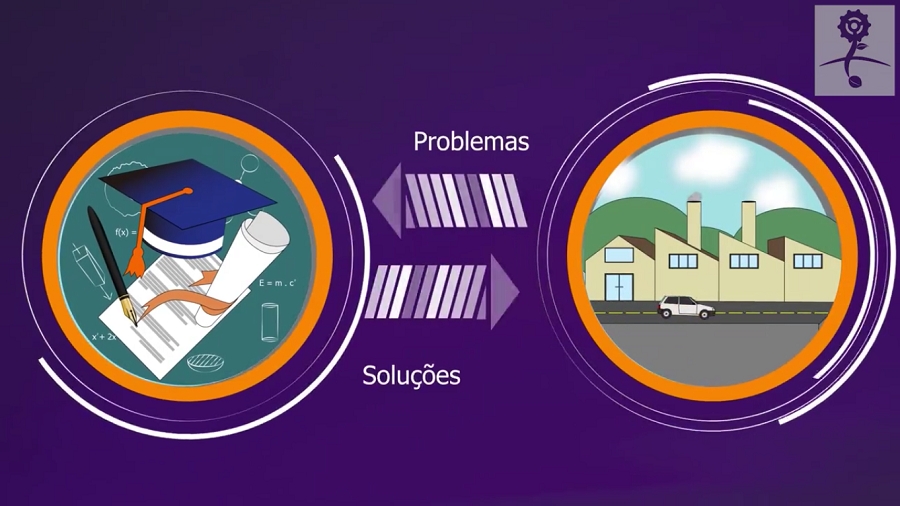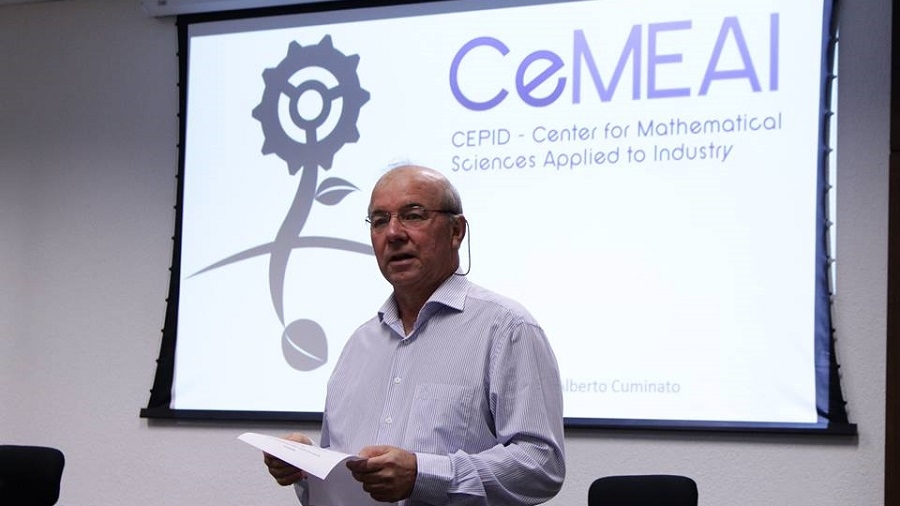
Eventos (17)
Histórico e Objetivos
A qualidade da pesquisa em Ciências Matemáticas (CM) no Brasil é considerada de muito bom nível, como atestam a recente concessão de uma medalha Fields para um brasileiro ou a classificação do Brasil como nível IV na IMU (International Mathematical Union). No entanto, essa pesquisa tem cunho quase que exclusivamente acadêmico. Várias experiências em países desenvolvidos atestam que as Ciências Matemáticas podem contribuir de maneira decisiva para a inovação, geração de novos conhecimentos e tecnologias e agregar valor a produtos e processos (Relatório Deloitte sobre o Benefício Econômico da Pesquisa em Matemática na Inglaterra).
No CEPID-CeMEAI nos propusemos a modificar essa realidade promovendo contacto com problemas industriais por meio dos workshops com a indústria que realizamos periodicamente. É bastante comum em outros centros, por exemplo, no OCIAM em Oxford, realizar-se uma Escola de modelagem na semana anterior ao Workshop para proporcionar aos alunos de Pós-graduação, como treinamento para o evento da semana posterior. Nessa Escola são apresentados problemas reais já estudados em ocasiões anteriores para os quais se tem uma boa base de conhecimento e os alunos trabalham durante uma semana, guiados pelo tutor na solução ou estudo desses problemas. Com isso espera-se que esses alunos estejam mais bem preparados para o workshop a seguir e possam contribuir de maneira efetiva para a solução dos problemas reais a serem trabalhados. (Outros Study Groups with Industry no mundo)
III WSMPI - 3rd Brazilian SGI (2016)
3º Workshop de Soluções Matemáticas para Problemas Industriais (3rd Brazilian Study Group with Industry)
http://www.cemeai.icmc.usp.br/3WSMPI/
Problemas
1) Divergent Beam Transform from a ∂-equation [pdf]
Empresa - LNLS
2) Controle de endo e ectoparasitos em bovinos de corte por meio da análise da infectividade [pdf]
Empresa - UFMG
3) Tyre Burst Numerical Simulation [pdf]
Empresa - Embraer
4) Score único [pdf]
Empresa - BoaVista SCPC
5) Traffic prediction algorithm via data analysis [pdf]
Empresa - Splice
6) Testing environments & optimization [pdf]
Empresa - AMDOCS
Title: Mathematical Modeling of Combustion in Rotary Kilns
Summary:
The presentation will describe the Rotary Kiln and the modeling of the processes inside this equipment. The rotary kiln is a heavy equipment which is used at the mineral processing industry, especially cement fabrication, to the calcination of materials at very high temperatures. The heat input to the process is based on the combustion of several types of fuels. Therefore, inside the rotary kiln we can identify many physical and chemical processes which can be mathematically modeled and enable the simulation of the equipment operation under different conditions. The use of high-end CFD (Computational Fluid Dynamics) represents the ultimate application of that mathematical modeling.
Dynamis intends to present a practical case: the modeling of the world’s largest Nickel Ore Calcining Kiln.
Presentation by:
Guilherme Martins Ferreira – Partner at Dynamis Mecânica Aplicada – Graduated as Mechanical Engineer at Escola Politécnica (São Paulo State University) in 1983, post-graduated in Thermal Engineering and Fluid Mechanics. Highly experienced at Chemical Industry, Petrochemicals, Agro-industry, Power Generation, Cement & Lime, Mineral Processing, Metallurgy, Iron-making & Steelmaking, Pulp & Paper, Ceramics, Glass , Oil & Gas and Nuclear Industries.
Conferência 9: Objective Bayesian Analysis for Generalized Normal Distribution with Application on the Height of Brazilian Eucalyptus Clones
Vera Tomazella, DEs-UFSCar
Abstract
This work presents the Objective Bayesian approach for the estimation of the parameters of the generalized normal model. Simulation studies were performed to analyze the frequentist properties of credible intervals from the reference posterior distribution. The proposed methodology is illustrated in a real data set.
Conferência 8: Lifetime model for multivariate survival data with a surviving fraction
Vicente G. Cancho, ICMC-USP
Abstract
In this paper we propose a new lifetime model for multivariate survival data with a surviving fraction. We develop this model assuming that there are m types of unobservable competing risks, where each risk is related to a time of the occurrence of an event of interest. We explore the use of Markov chain Monte Carlo (MCMC) methods to develop a Bayesian analysis for the proposed model. We also perform a simulation study in order to analyze the frequentist coverage probabilities of credible interval derived from posteriors. Our modeling is illustrated through a real data set.
Conferência 7: A Bayesian Approach to Zero-Modified Poisson Model for the Prediction of Match Outcomes: An Application to the 2012-2013 La Liga Season
Adriano K. Suzuki, ICMC-USP
Abstract
In any sports competition, strong interest is devoted to the knowledge on the team that will be champion. The result of a match, the chance of a team being either qualified for a specific tournament, or relegated, the best attack and defense are also subjects of interest. This paper presents a Bayesian methodology for modeling the number of goals scored by a team based on Zero-Modified Poisson distribution. Inference procedures and computational simulation studies are also discussed. The proposed methodology was applied to the 2012-13 La Liga and the results were compared with those of Poisson model through the De Finetti measure and percentage of correct predictions.
Conferência 6: Zero-Modified Regression Models
Katiane S. Conceição, ICMC-USP
Abstract
In this work, we present a family of distributions for count data, the so called Zero- Modified Power Series, which is an extension of the Power Series distributions family whose support starts at zero. This extension consists in modifying the probability of observing zero of each Power Series distribution, allowing the new zero-modified distribution appro- priately accommodate datasets which have any amount of zero observations (for instance, zero-inflated or zero-deflated datasets). Power Series distributions included in the Zero- Modified Power Series family are: Poisson, Generalized Poisson, Geometric, Binomial, Negative Binomial and Generalized Negative Binomial. We introduce the Zero-Modified Power Series regression models and propose a Bayesian approach considering information matrix priori. Two real datasets, corresponding to leptospirosis notifications in cities of Bahia State at Brazil, are analyzed. We emphasize that the proposed Zero-Modified Power Series family distributions and their regression versions can accommodate sets of count data without any previous knowledge about the characteristic of zero-inflation (-deflation) present in the dataset.
Conferência 5: The Simplified, Effective, Labor Monitoring to Action Tool for Better Outcomes in Labour Difficulty
Gleici da Silva Castro Perdoná, FMRP-USP
Abstract
In this talk I present some proposed statistical methods to solve problems in the area of reproductive health. The project namely Simplified, Effective, Labor Monitoring to Action (SELMA) is part of a major project: Better Outcomes in Labour Difficulty (BOLD). Its objective is the development of the SELMA tool. SELMA is an algorithm to guide health professionals, offering a solution to avert intrapartum-related fetal death of babies (stillbirth) and neonatal death or severe morbidity. This tool consider different outcomes and predictors which determine the risk of severe perinatal outcomes related to labour, providing customized guidance for the management of labour, including the use of amniotomy, labour augmentation and C-section. It provides a benchmark for labour management in health facilities. Our proposed structure considers a different point of view to answer questions on risk that consider survival analysis to made the SELMA.
Conferência 3: Relaxed Poisson cure rate models
Josemar Rodrigues, ICMC-USP
Abstract
The purpose of this paper is to make the standard promotion cure rate model (Yakovlev & Tsodikov, 1996) more flexible by assuming that the number of lesions or altered cells after some a treatment follows a fractional Poisson distribution (Laskin, 2003). It is proved that the well-known Mittag-Leffler relaxation function (Berberan-Santos, 2005) is a simple way to obtain a new cure rate model which is a compromise between the promotion and geometric cure rate models allowing for super-dispersion. So, the relaxed cure rate model developed here can be considered as a natural and less restrictive extension of the popular Poisson cure rate model at the cost of an additional parameter but a competitor to negative-binomial cure rate models (Rodrigues et al., 2009b). Some mathematical properties of a proper relaxed Poisson density, a simulation study and an illustration of the proposed cure rate model from the Bayesian point of view are presented. Key words: Bayesian inference, Poisson cure rate model, Fractional Poisson distribution, Mittag-Leffler relaxation function, Relaxed Poisson cure rate model, Geometric cure rate model.
Conferência 2: Degradation model
N. Balakrishnan, McMaster University, Canadá
In this talk, I will give a detailed description about degradation experiment, the data observed from such an experiment, the models that are used for their analysis, and then finally give some numerical results to illustrate the applicability of the developed results.
Conferência 1: Statistical Innovation in Brazil: Technology Transfer and Products
Francisco Louzada, ICMC-USP
Abstract
The statistical science has reached a remarkable stage of academic growth, which has been driven by its huge applicability in virtually all areas of knowledge. Despite this success, there exists at least one area in which the statistics has not kept up the progress experienced by other sciences, particularly in developing countries. It is the development of statistics as activity with interdisciplinary potential to promote technological development, and effectively contribute to the productive sector to increase its value through the development of specific statistical products. In the above context, innovation and technology transfer are crucial for efficient communication between statistical researchers and industry, promoting interaction with professionals in the public and productive sectors, as well as with the population. In this conference I present the main statistical products that have been developed for the Group of Risk Assessment at the Centre for Mathematic Sciences Applied to Industry (CEPID-CeMEAI) to approximate the academy, the productive sector and the population in general in Brazil.

